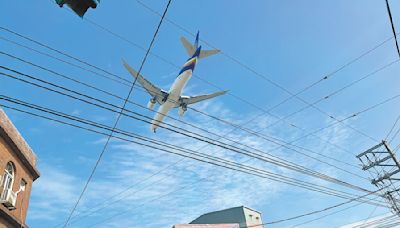6000線上申請 相關
廣告過去一個月已有 超過 1 萬 位使用者造訪過 okbank.com
OK忠訓國際,20年貸款顧問經驗,超高核貸率,有效解決貸款難題,申貸更有保障,立即填單諮詢。 免盲目亂申貸!OK忠訓國際免費諮詢,快速釐清貸款問題,保障過件率,申貸更有保障,解決問題!
- 神奇 整合負債最新案例
聰明整合債務 延長繳款期限降低月付金
專業協助整合負債 ,找回你的美好人生
- 震撼 汽車貸款最高成數200%
優質車貸服務讓資金快速到位
讓您現金在手靈活運用
- 神奇 整合負債最新案例
搜尋結果
Taiwan has been settled for at least 25,000 years. Ancestors of Taiwanese indigenous peoples settled the island around 6,000 years ago.
Gross domestic product (GDP) is the market value of all final goods and services from a nation in a given year. [2] . Countries are sorted by nominal GDP estimates from financial and statistical institutions, which are calculated at market or government official exchange rates.
The World Factbook, produced by the Central Intelligence Agency (CIA), estimates the ten most spoken languages ( L1 + L2) in 2022 as follows: [46] See also. Lingua franca. Lists of languages. List of languages by number of native speakers. List of languages by the number of countries in which they are recognized as an official language.
It soon turned out that Oppenheimer had hugely underestimated the magnitude of the project: Los Alamos grew from a few hundred people in 1943 to over 6,000 in 1945.
The list below includes links to articles with further details for each decade, century, and millennium from 13,000 BC to AD 3000. Century. Decades. 13th millennium BC · 13,000–12,001 BC. 12th millennium BC · 12,000–11,001 BC.
- Composition
- Stratification
- Physical Properties
- Optical Properties
- Circulation
- Evolution of Earth's Atmosphere
- Images from Space
- See Also
- External Links
The three major constituents of Earth's atmosphere are nitrogen, oxygen, and argon. Water vapor accounts for roughly 0.25% of the atmosphere by mass. The concentration of water vapor (a greenhouse gas) varies significantly from around 10 ppm by mole fraction in the coldest portions of the atmosphere to as much as 5% by mole fraction in hot, humid a...
In general, air pressure and density decrease with altitude in the atmosphere. However, the temperature has a more complicated profile with altitude, and may remain relatively constant or even increase with altitude in some regions (see the temperature section, below). Because the general pattern of the temperature/altitude profile, or lapse rate, ...
Pressure and thickness
The average atmospheric pressure at sea level is defined by the International Standard Atmosphere as 101325 pascals (760.00 Torr; 14.6959 psi; 760.00 mmHg). This is sometimes referred to as a unit of standard atmospheres (atm). Total atmospheric mass is 5.1480×1018 kg (1.135×1019 lb), about 2.5% less than would be inferred from the average sea level pressure and Earth's area of 51007.2 megahectares, this portion being displaced by Earth's mountainous terrain. Atmospheric pressure is the total...
Temperature
The division of the atmosphere into layers mostly by reference to temperature is discussed above. Temperature decreases with altitude starting at sea level, but variations in this trend begin above 11 km, where the temperature stabilizes over a large vertical distance through the rest of the troposphere. In the stratosphere, starting above about 20 km, the temperature increases with height, due to heating within the ozone layer caused by the capture of significant ultraviolet radiation from t...
Density and mass
The density of air at sea level is about 1.2 kg/m3 (1.2 g/L, 0.0012 g/cm3). Density is not measured directly but is calculated from measurements of temperature, pressure and humidity using the equation of state for air (a form of the ideal gas law). Atmospheric density decreases as the altitude increases. This variation can be approximately modeled using the barometric formula. More sophisticated models are used to predict the orbital decay of satellites. The average mass of the atmosphere is...
Solar radiation (or sunlight) is the energy Earth receives from the Sun. Earth also emits radiation back into space, but at longer wavelengths that humans cannot see. Part of the incoming and emitted radiation is absorbed or reflected by the atmosphere. In May 2017, glints of light, seen as twinkling from an orbiting satellite a million miles away,...
Atmospheric circulation is the large-scale movement of air through the troposphere, and the means (with ocean circulation) by which heat is distributed around Earth. The large-scale structure of the atmospheric circulation varies from year to year, but the basic structure remains fairly constant because it is determined by Earth's rotation rate and...
Earliest atmosphere
The first atmosphere consisted of gases in the solar nebula, primarily hydrogen. There were probably simple hydrides such as those now found in the gas giants (Jupiter and Saturn), notably water vapor, methane and ammonia.
Second atmosphere
Outgassing from volcanism, supplemented by gases produced during the late heavy bombardment of Earth by huge asteroids, produced the next atmosphere, consisting largely of nitrogen plus carbon dioxide and inert gases.A major part of carbon-dioxide emissions dissolved in water and reacted with metals such as calcium and magnesium during weathering of crustal rocks to form carbonates that were deposited as sediments. Water-related sediments have been found that date from as early as 3.8 billion...
Third atmosphere
The constant re-arrangement of continents by plate tectonics influences the long-term evolution of the atmosphere by transferring carbon dioxide to and from large continental carbonate stores. Free oxygen did not exist in the atmosphere until about 2.4 billion years ago during the Great Oxygenation Event and its appearance is indicated by the end of the banded iron formations. Before this time, any oxygen produced by photosynthesis was consumed by the oxidation of reduced materials, notably i...
On October 19, 2015, NASA started a website containing daily images of the full sunlit side of Earth at https://epic.gsfc.nasa.gov/. The images are taken from the Deep Space Climate Observatory(DSCOVR) and show Earth as it rotates during a day.
Buchan, Alexander (1878). "Atmosphere" . Encyclopædia Britannica. Vol. III (9th ed.). pp. 28–36.Alexander Boris de Pfeffel Johnson (born 19 June 1964) is a British politician and writer who was Prime Minister of the United Kingdom and Leader of the Conservative Party from 2019 to 2022. He was previously Foreign Secretary from 2016 to 2018 and Mayor of London from 2008 to 2016.


